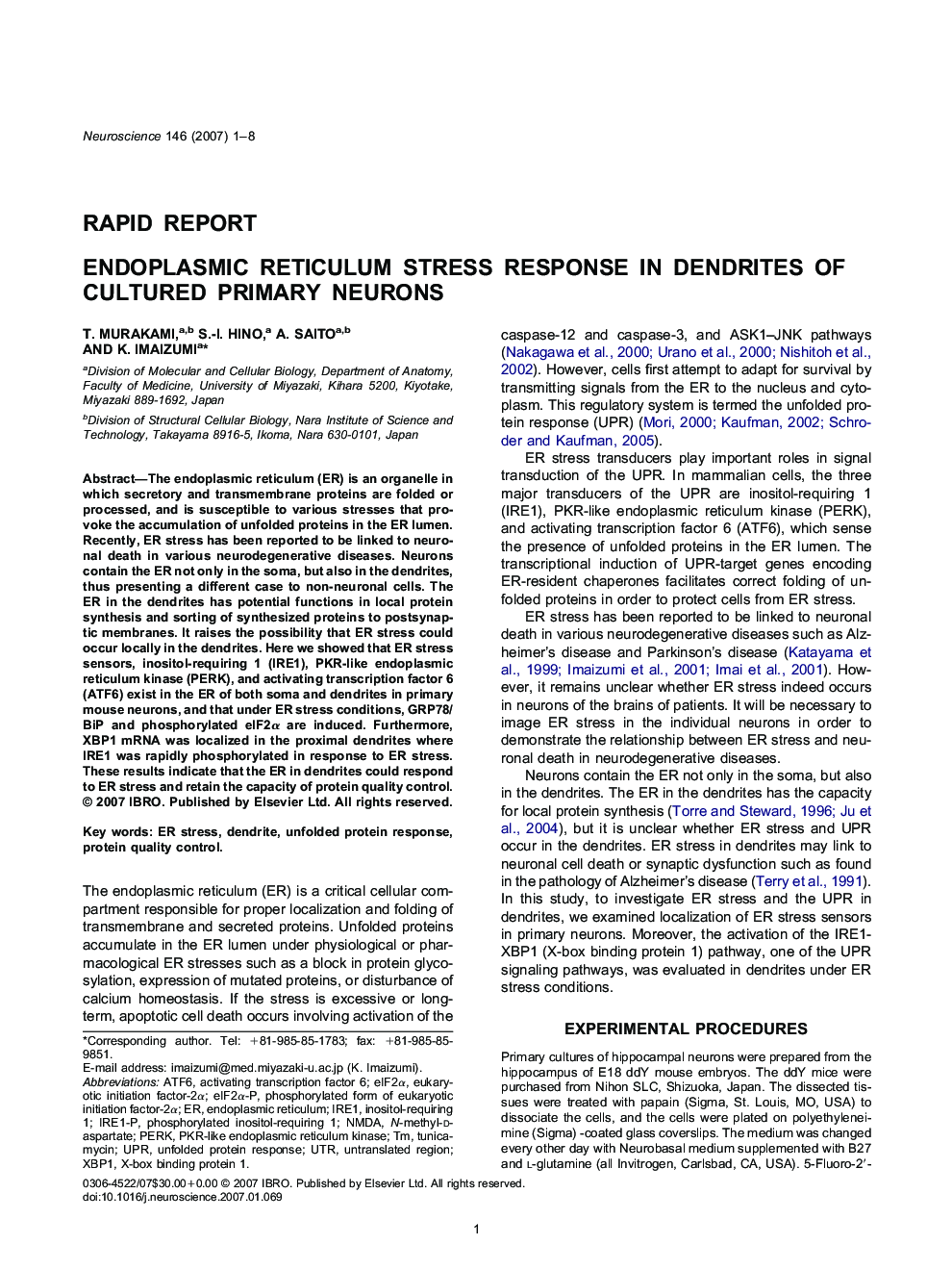| Article ID | Journal | Published Year | Pages | File Type |
|---|---|---|---|---|
| 4340964 | Neuroscience | 2007 | 8 Pages |
Abstract
The endoplasmic reticulum (ER) is an organelle in which secretory and transmembrane proteins are folded or processed, and is susceptible to various stresses that provoke the accumulation of unfolded proteins in the ER lumen. Recently, ER stress has been reported to be linked to neuronal death in various neurodegenerative diseases. Neurons contain the ER not only in the soma, but also in the dendrites, thus presenting a different case to non-neuronal cells. The ER in the dendrites has potential functions in local protein synthesis and sorting of synthesized proteins to postsynaptic membranes. It raises the possibility that ER stress could occur locally in the dendrites. Here we showed that ER stress sensors, inositol-requiring 1 (IRE1), PKR-like endoplasmic reticulum kinase (PERK), and activating transcription factor 6 (ATF6) exist in the ER of both soma and dendrites in primary mouse neurons, and that under ER stress conditions, GRP78/BiP and phosphorylated eIF2α are induced. Furthermore, XBP1 mRNA was localized in the proximal dendrites where IRE1 was rapidly phosphorylated in response to ER stress. These results indicate that the ER in dendrites could respond to ER stress and retain the capacity of protein quality control.
Keywords
Eukaryotic initiation factor-2αtunicamycinNMDAN-methyl-d-aspartateUPRIRE1ATF6XBP1eIF2αPKR-like endoplasmic reticulum kinaseER stressDendriteendoplasmic reticulumactivating transcription factor 6UTR یا untranslated regions untranslated regionUnfolded protein responseX-box binding protein 1PERKProtein quality control
Related Topics
Life Sciences
Neuroscience
Neuroscience (General)
Authors
T. Murakami, S.-I. Hino, A. Saito, K. Imaizumi,
